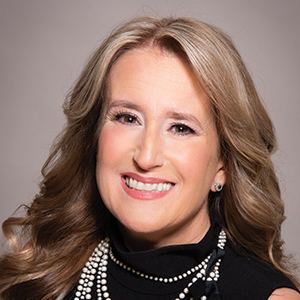From every angle, 2018 was a challenging year for the mortgage industry. This past October, mortgage-application activity dropped to its lowest level since December 2014 as interest rates reached an eight-year high, according to the Mortgage Bankers Association.
Student debt continued to weigh down potential homebuyers, as the share of first-time homebuyers decreased for the third consecutive year, according to the National Association of Realtors. Nonbank mortgage brokers and lenders employed 344,000 people this past September. Still, according to the U.S. Bureau of Labor Statistics, that number was down by 1,600 jobs from the prior month.
Now here’s the good news. A combination of moderate rises in mortgage rates and dipping growth in home prices is projected to boost existing- and new-home sales through 2020, according to Freddie Mac. In fact, the overall U.S. homeownership rate edged up in this past third quarter, and the share of millennial-age buyers who own homes also rose.
That’s great news for a market that has seen prospective homebuyers squeezed by a combination of tight inventories, rising home prices and increasing mortgage rates. In this business climate, as a mortgage originator or lender, it pays to be a niche player. In the wholesale arena, especially, there are advantages to specializing in specialty lending.
Specialty lending
Banks are driven by their bottom line, but may not be attuned to, or even able to adjust quickly enough, to meet specific borrower needs. But by listening to your partners, truly hearing what is happening in the marketplace and the specific challenges being faced, wholesale lenders and the mortgage originators working with them, have a unique opportunity to develop and sell products based on those needs.
By committing to aggressive and creative program development, mortgage companies can continue to add value for clients by looking for ways to become more valuable partners. That can be accomplished, in particular, by developing niche product offerings that address market needs — specialized programs that mortgage companies originators can make available to homebuyers.
Fundamentally, wholesale lending is a relationship business. It’s all about building a trusting, long-term and high-value relationships between the clients, lenders and mortgage originators. Providing a robust menu of solutions to address market conditions and specific needs for homebuyers can help originators succeed.
Manufactured homes
The lack of affordable homes available for purchase, coupled with a growing demand, has created an opportunity for lenders to help mortgage originators and homebuyers alike — by expanding expertise in manufactured homes as well as in renovation lending in the government construction-to-permanent marketplace.
Manufactured homes are quick to deliver, high-quality and relatively easy to set up, representing a viable alternative to traditionally built homes. Fortunately, we are seeing there has been an increase in financing options especially suited for the purchase of manufactured homes.
Educating borrowers is key. That should involve introducing manufactured housing as an option, providing information on where to search for homes and lots, and sharing information about the specific financing options available. Financing manufactured housing has inherent complexity because the home starts off as personal property and converts to real property when permanently installed on the land purchased by the homebuyer. So, it behooves borrowers to work with lenders and mortgage originators who have a track record of experience, specifically in manufactured housing.
Ginnie Mae, the Federal Housing Administration and the Department of Veterans Affairs (VA) all support financing options for manufactured housing. In addition, Fannie Mae’s MH Advantage initiative, introduced earlier this year, is a mortgage program for specially designated manufactured homes with features comparable to traditional single-family homes. These homes can include interior features like drywall, energy-efficient appliances and upgraded cabinets in kitchens and bathrooms, as well as exterior amenities — such as porches, garages and architectural features like eaves and higher-pitch rooflines.
Some 22 million Americans live in manufactured homes, according to a 2017 report by the Manufactured Housing Institute. That’s nearly 10 percent of the housing market, and the segment is simply growing too quickly to ignore.
One-time close
What if a borrower wants to buy a piece of land, build a home or put a manufactured home on the lot, and maybe add some site improvements like a detached garage or even a swimming pool? And what if that borrower wants to have it all wrapped into a single permanent fixed-rate loan?
Well, one-time close (OTC) construction-to- permanent loans may be a mouthful, but the name tells you exactly what the program provides. Because the loan closes before construction starts, there is no requalifying the borrower — like a traditional two-step construction loan. That means there is no need for re-appraising, no second closing and no incurring additional closing costs by having to refinance from a construction to a permanent loan.
Shane M. Kever, a senior loan officer at VSI Home Lending in Fort Wayne, Indiana, understands the need for OTC loans all too well. Kever has been working with three of the largest builders in Allen County, the largest county in the state, and understands how competitive the construction-loan market is from the builders’ perspective.
“Because builders could not just build without also worrying about determining if a borrower was viable, worthy of carrying for four to six months during construction, we were looking for a unique competitive construction-loan program for them,” Kever explains. “With a traditional construction loan, every draw request can potentially slow down the construction process.
“The OTC construction-to-permanent loan closes up front,” Kever added, “[so] there is reduced risk, reduced paperwork and reduced potential for delays — which all add up to a greater guarantee for the builder of getting paid at the completion of construction.”
Renovation loans
Basically, renovation loans allow borrowers to finance or refinance properties that need work. They can provide financing for everything from small repairs and simple updates to large-scale renovations — all with one closing.
And, unlike a home equity loan or line of credit, a renovation loan can be part of the primary mortgage — not a second loan. What’s more, the loan amount is based on the value of the home after improvements are completed.
There are a number of government-sponsored renovation-loan programs to choose from. They include the Fannie Mae HomeStyle or FHA 203k renovation loans — both of which feature OTC mortgages and loan limits based on the improved value of the property.
Loan programs also are available for homeowners in underserved areas and areas affected by disasters. Renovation-loan programs also exist that allow current homeowners to refinance their mortgages with an “as completed” valuation that provides them with the cash needed to make repairs and upgrades.
VA loans
There are approximately 2.1 million active-duty and reserve personnel serving in the U.S. military, plus 20 million veterans, and nearly all of these people are eligible for VA loans — home loans that are backed by the U.S. Department of Veterans Affairs.
These government-backed loans offer very competitive rates and one of the only zero-down options left. They are one way of paying back our brave men and women in uniform for their service to the country.
Within the larger VA loan category are a range of options. There are more traditional fully amortizing fixed-rate loans with a variety of terms. There are one-time close loans that can be used to finance construction, lot purchases and permanent mortgages — all with a single loan.
There’s even a refinancing program (IRRRL) that allows a borrower to refinance an existing VA loan. There’s also a VA-renovation loan, allowing a borrower to buy a fixer-upper and make needed repairs. Offering VA loans is a great way to expand your customer base while helping veterans save money with low-rate loans.
Specialized Support
In addition to offering a variety of specialized-loan programs, leading wholesale lenders provide tools to help their mortgage originators be prepared and confident in their day-to-day operations. Providing convenient access to educational resources and technology solutions for today’s fast-paced environment is vital to growing as a niche lender.
Listening to your partners is paramount. Not only will they tell you what is happening in their local marketplace, but by truly listening to the challenges they face and what needs they have, you can develop products and programs based on those needs. The smaller, locally centralized, relationship-driven lenders who are well-educated in a broad menu of loan programs have the greatest potential.
Consumers want a personal coach who is not only familiar with the market, but who can be a true partner in helping to identify different loan options and can help them make the strongest offer on a home. If you, as a mortgage originator, and the lenders you work with can provide uniquely differentiated products, specialized services and supporting technologies, then you can help more customers achieve their goals, and bring more families home.
Author
-

Laura Brandao is chief growth officer and a partner at mortgage lender EPM, where she oversees operations and business development. She also serves as the CEO of Lighthouse Lending Capital, a new division of EPM that specializes in unique loan programs and private lending. She serves with several organizations dedicated to lifting others, including as chair of the visionary program for the National Association of Minority Mortgage Bankers of America (NAMMBA) and on the Mortgage Bankers Association of New Jersey’s women's committee.
View all posts





